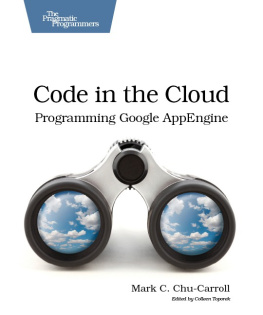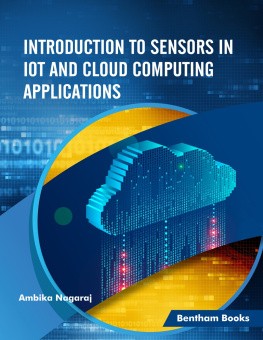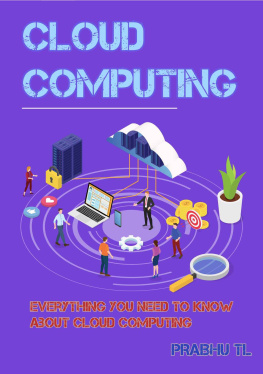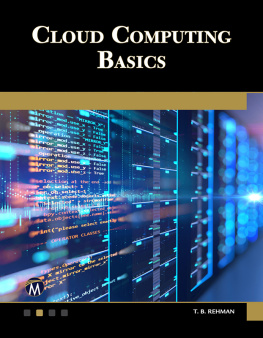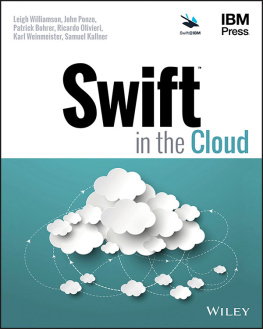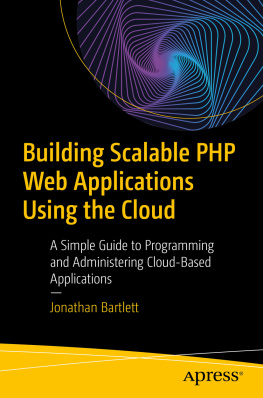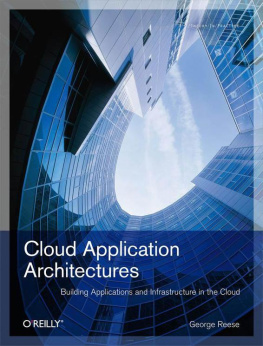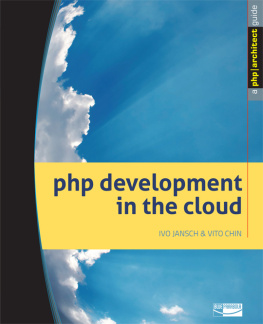Code in the Cloud
Programming Google App Engine
Mark C. Chu-Carroll
Version: P1.0 (April, 2011)
Copyright 2011, The Pragmatic Bookshelf. This book is licensed tothe individual who purchased it. We don't copy-protect itbecause that would limit your ability to use it for yourown purposes. Please don't break this trustdon't allow othersto use your copy of the book. Thanks.
Dave & Andy.
Table of Contents
Copyright 2011, The Pragmatic Bookshelf.
Part 1
Getting Started with Google App Engine
Chapter 1
Introduction
Cloud computing is aninnovative and exciting style of programming and using computers. Itcreates tremendous opportunities for software developers: cloudcomputing can provide an amazing new platform for building new kindsapplications. In this chapter, well look at the basic concepts: whatcloud computing is, when and why you should use it, and what kinds ofcloud-based services are available to you as an applicationdeveloper.
Whats Cloud Computing?
Before we look at how to write cloud programs withGoogle App Engine, lets start at the very beginning and ask just what we mean bycloud computing? What is the cloud ? How is itdifferent from desktop computing or old-fashioned client-server computing?And most importantly, why should you, as a software developer, care about thecloud? When should you use it, and what should you use it for?
The Cloud Concept
In the modern world of the Internet and the World Wide Web, there arethousands upon thousands of computers sitting in data centers, scatteredaround the world. We use those computers constantlyfor chatting with otherpeople, sending email, playing games, and reading and writing blogs. When weredoing one of these everyday activities, were accessing a program running on aserver, using our browser as a client.
But where is the program actually running? Where is the data? Where arethe servers? Theyre somewhere out there, somewhere in some datacenter, somewhere in the world. You dont know where, and more importantly,you dont care; theres absolutely no reason for you to care.What matters to you is that you can get to the program and the data wheneveryou need to.
Lets look at a simple example. A few years ago, I started writing ablog. (The blog has since moved, but its still a good example.) When I got started, I used Googles Blogger service towrite it. Every day, I would open up my web browser, go tohttp://goodmath.blogspot.com/admin, and start writing. When Ifinished, Id click on the Post button, and the blog post wouldappear to all of my readers. From my point of view, it just worked. All Ineeded was my web browser and the URL, and I could writemy blog.
Behind the scenes, Blogger is a complex piece of software run by Googlein one of its data centers. It hosts hundreds of thousands of blogs, and thoseblogs are read by millions of users every day. When you look at it this way,its obvious that the software behind Blogger is running on lots of computers.How many? We dont know. In fact, its probably not even a fixed numberwhennot many people are accessing it, it doesnt need to be running on as manymachines; when more people start using it, it needs more machines. The numberof machines running it varies. But from the users point of viewwhetherthat user is a blog author or a blog readernone of that matters. Bloggeris a service, and it works. When I want to write a post, I can goto Blogger and write it, and when people go to my blogs web page, they canread it.
Thats the fundamental idea of the cloud: programs and data are on acomputer somewhere out there, and you neither know nor carewhere that computer is.
Why call this collection of resources a cloud? A cloud is a hugecollection of tiny droplets of water. Some of those droplets fall on my yard,providing the trees and the lawn with water; some run off into the reservoirfrom which my drinking water comes. And the clouds themselves grow from evaporatedwater, which comes from all over the place. All I want is enough water in myyard to keep the plants alive and enough in the reservoir so that I havesomething to drink. I dont care which cloud brings the rain;its all the same to me. I dont care where on earth that water came from.Its all just waterthe particular drops are pretty muchexactly the same, and I cant tell the difference. As long as I get enough,Im happy.
So think about the various data centers around the world where companieshave swarms of computersas clouds. Lots of the biggest players in networkcomputing, including Google, Amazon, Microsoft, IBM, and Yahoo, all havethousands of machines connected to networks running all sorts of software.Each of those centers is a cloud, and each processor, each disk drive, is adroplet of water in that cloud. In the cloud world, when you write a program,you dont know what computer its going to run on. You dont know where thedisks that store the data are, and you dont need to care. You just need toknow how many droplets you need.
Cloud to theDeveloper
Cloud computing is a fundamental change from how computers and softwarehave worked in the past. Traditionally, if you wanted to run an application,you went out and bought a computer and software, set it up on your ownpremises, and ran your program. You needed to pick out which operating systemyou were going to run, handle the installation of your software, and maintainyour computerkeeping track of software upgrades, security, backups, and soon.
With cloud computing, you dont do any of that. If youre a user of thecloud, you buy access to the application you want and then connect to it fromanywhere. Installing the software, maintaining the hardware and software wherethe application runs, making sure that the data is kept safe and securenoneof that is your concern. In the cloud, you buy software as aservice. If you need more storage than a typical user, you buy extrastorage from the service provider. If that means buying and installing a newdisk drive, thats up to the provider. You just buy storage-as-a-service fromthem: how they provide it is their problem. You tell them what youneedin both the physical sense (I need 1TB ofstorage.) and in less tangible quality-of-service senses (I needto guarantee that my storage is transactional, so that after I commit achange, data will never be lost.). You tell them your requirements, andsome cloud provider will sell you a service that meets those requirements.
What this means is that when youre developing for the cloud, instead ofbuying a computer and running software on it, you break things down to basicbuilding blocks, buy those pieces from service providers, and put themtogether however you want to build a system.
The building blocks are the resources you need to run aprogram or to perform a task. Resources include things like processing time,network bandwidth, disk storage, and memory. As a user of the cloud, you dontneed to be concerned about where these resources are located. You know whatyou need, and you buy that from whoever can provide it to you mostconveniently.
For developers, cloud computing introduces an even bigger change. Whenyou develop for the cloud, youre not building a piece of software to sell toyour customersyoure building a service for your customers touse. Understanding that difference is crucial: you need to design yourapplication around the idea that its a service youre going to provide tousers, not a standalone application that theyre going to install on theircomputers. Your customers are going to choose a service based on the tasksthey want to accomplish, so your application needs to be designed with thetask in mind, and you must provide it in the most flexible way possible.

